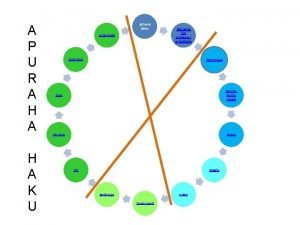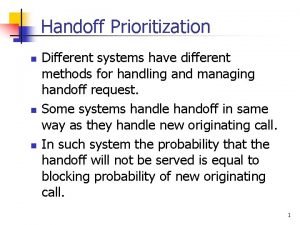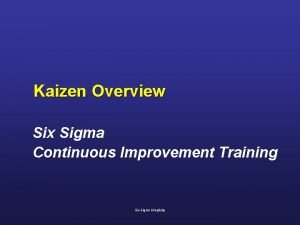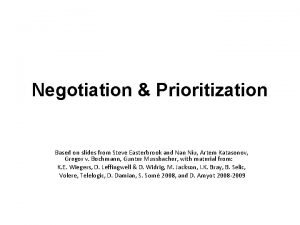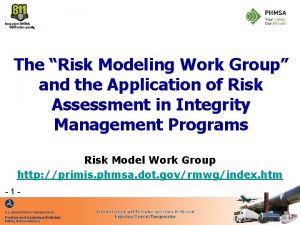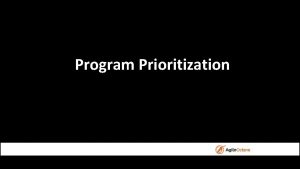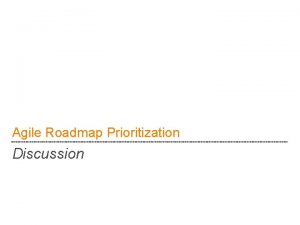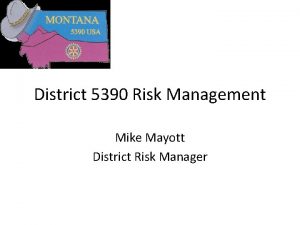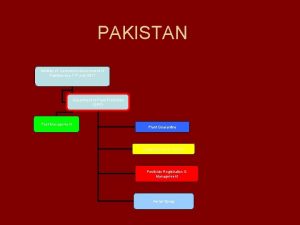Risk Modeling for District Prioritization in Pakistan Laina




























- Slides: 28

Risk Modeling for District Prioritization in Pakistan Laina Mercer Steve Kroiss, Hil Lyons, Guillaume Chabot‐Couture 20 April, 2016

Recent History • WPV 1 cases in 2016: – Afghanistan: 4 cases in 3 districts – Pakistan: 8 cases in 8 districts • Last 6 months represent the lowest high season since 2007 in Pakistan. • Where and how should the program intervene?

We Want a Framework for Prioritizing Sub‐National Areas Why? • The Pakistan polio program plans their vaccination campaigns annually • They need to decide how and where to allocate resources and target special interventions

We Want a Framework for Prioritizing Sub‐National Areas Why? • The Pakistan polio program plans their vaccination campaigns annually • They need to decide how to allocate resources and where to target special interventions What information do we have to study risk in space and time? • The most geographically and temporally rich data is the Acute Flaccid Paralysis (AFP) surveillance data • In addition to providing information about WPV 1 cases, the non‐polio AFP cases provide us with routine and campaign dose histories from a sample from the population

A Framework for Prioritizing Districts Based on Risk • Estimate a risk score based on both the probability of a case and the number of cases over 6 months in each district • Risk is modeled as a function of – Zero dose routine immunization (RI) fraction – Under immunized fraction – Vaccine derived type 1 population immunity – Recent WPV 1 cases – High season (Jan‐June vs. July‐Dec)

Dose History Data Is Noisy

Space‐time Smoothing Model for Covariates •

Impact of Smoothing Covariates – Independent Interaction

Impact of Smoothing Covariates – Structured Interaction

Smoothed Zero Dose RI and Under Immunized Rate

Vaccine Derived Type 1 Immunity Calculations • Annual age‐specific campaign quality is estimated with a Bayesian spatiotemporal model [3] • Population Immunity projected based on campaign type and quality. Peshawar [3] Upfill‐Brown, Voorman, Chabot‐Couture, Shuaib, Lyons (2016)

Poisson Hurdle Model •

Poisson Hurdle Model •

Poisson Hurdle Model •

Final Model The probability of having at least one case in a 6 month period • Type 1 immunity ‐ negatively associated • Under immunized fraction ‐ positively associated • Zero dose RI – positively associated • Recent cases – positively associated • High Season The number of cases expected given at least one case • Type 1 immunity – negatively associated • High Season

Model Validation • Very good predictive accuracy at the district level as measured by area under the curve. • Approximately 80% sensitivity for top 50 ranked districts over time.


Impact and Future Directions • Pakistan polio program uses these results to help inform their tiered district prioritizations. • Helps to inform on the number and location of sub‐national vaccination campaigns. • Work is ongoing for the 2016 classifications. • Considering risk analysis for sub‐ district geographies.

Acknowledgements National Emergency Operating Center – Islamabad, Pakistan Jamal Ahmed Abdirahman Mahamud Ashraf Wahdan And many others IDM Polio Team Steve Kroiss Hil Lyons Mike Famulare Kevin Mc. Carthy Guillaume Chabot‐Couture Alex Upfill‐Brown The Gates Foundation Arie Voorman Sue Gerber Sidney Brown And many others

References 1. Knorr‐Held, Leonhard. "Bayesian modelling of inseparable space‐time variation in disease risk. " Statistics in medicine 19. 1718 (2000): 2555‐ 2567. 2. Schrödle, Birgit, and Leonhard Held. "Spatio‐temporal disease mapping using INLA. " Environmetrics 22. 6 (2011): 725‐ 734. 3. Upfill‐Brown Alexander, Voorman Arend, Chabot‐Couture Guillaume, Shuaib Faisal, Lyons Hil. “Analysis of vaccination campaign effectiveness and population immunity to support and sustain polio elimination in Nigeria. ” To appear in BMC Medicine. (2016)

Additional Slides

Impact of Smoothing Covariates – No Interaction

Observed Cases and Smoothed Risk

Residual Risk

Sensitivity of List • Sensitivity of list (T 1‐ T 3) generally near 80%. • Poor predictive performance during outbreaks in Punjab province in 2008 and 2009.

District Prioritization Framework • Tier 1: Reservoir Districts (10 -15) – These area the areas that must be fixed if the program is to succeed. – Targeted with national and sub‐national vaccination campaigns. • Tier 2: High Risk/Vulnerability Districts (15 -30) – NIDs + SNIDs – These areas that are frequent recipients of virus and have known quality & immunity problems – These areas may harbor virus even if eliminated from reservoirs and subsequently re‐infect them – Targeted with national and sub‐national vaccination campaigns. • Tier 3: Outbreak Districts (Flexible) – NIDs + SNIDs, with SNIDs for 6 months following case/isolate – Areas not at high risk to report a case or become problematic – Areas to be added to the sub‐national vaccination calendar for a few rounds • Tier 4: Rest of Pakistan – Areas where RI is strong, quality is known to be high and/or risk is known to be low. – Will be included in national vaccination campaigns.

Final Classification in Collaboration with Pakistani Program • Approximately 80% sensitivity for T 1‐T 3 districts. • Process in ongoing for planning the 2016‐ 2017 campaign calendar.

Final Classification
 Olvi säätiö myönnetyt apurahat
Olvi säätiö myönnetyt apurahat Ellos laina
Ellos laina Risk management software engineering
Risk management software engineering Credit risk market risk operational risk
Credit risk market risk operational risk Modeling and role modeling theory
Modeling and role modeling theory Relational modeling vs dimensional modeling
Relational modeling vs dimensional modeling Prioritization
Prioritization Project intake and prioritization
Project intake and prioritization Wsjf prioritization
Wsjf prioritization Ticket prioritization
Ticket prioritization Prioritization
Prioritization Rpa prioritization matrix
Rpa prioritization matrix Delegation model
Delegation model Program prioritization process
Program prioritization process Predictive prioritization
Predictive prioritization Abcd prioritization nursing
Abcd prioritization nursing 1 improvement per day
1 improvement per day Damian2005 trick
Damian2005 trick Predictive analytics risk adjustment healthcare examples
Predictive analytics risk adjustment healthcare examples Predictive risk modeling
Predictive risk modeling Pipeline risk modeling
Pipeline risk modeling Predictive analytics risk adjustment healthcare examples
Predictive analytics risk adjustment healthcare examples Borra hål för knoppar
Borra hål för knoppar Tack för att ni har lyssnat
Tack för att ni har lyssnat Smärtskolan kunskap för livet
Smärtskolan kunskap för livet Mjälthilus
Mjälthilus Trög för kemist
Trög för kemist Argument för teckenspråk som minoritetsspråk
Argument för teckenspråk som minoritetsspråk Humanitr
Humanitr
